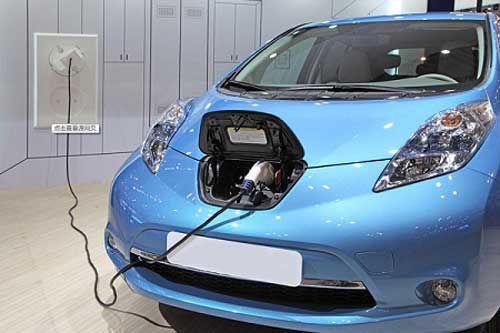With the growing push for electric vehicles by major car manufacturers, a fierce competition is emerging in the battery materials sector. Electric vehicle batteries rely on a range of critical raw materials, including lithium, nickel, cobalt, and graphite, with some models even incorporating rare earth elements. This increasing demand has triggered a surge in competition for these essential resources.
Last year, the prices of battery-related materials skyrocketed. Over the past 18 months, the price of cobalt from mines in the Democratic Republic of the Congo has surged by more than 190%. As shown in the image below, the fluctuating market has become a key concern for industry players.

Car manufacturers and battery producers are now entering long-term agreements with major mining companies to secure stable supply chains. With the rising adoption of electric vehicles and supportive government policies, the automotive industry is gradually shifting from diesel to electric powertrains. This transition is expected to significantly boost the demand for various battery metals in the coming years.
According to the International Energy Agency, the global electric vehicle (EV) fleet reached 2 million units in 2016. By 2040, it is projected to surpass 40 million. In response, several major mining companies are reorienting their business strategies to target the lithium-ion battery market. BHP Billiton has even called 2017 the "tipping point" for EV growth.
In September of this year, China's Great Wall Motor signed a five-year agreement with Australian miner Pilbara Minerals to secure lithium supply. Meanwhile, financial speculators have also entered the fray. Cobalt27, for instance, has stockpiled over 2,000 tons of cobalt, while Chinese hedge funds like Shanghai Hosfund have also accumulated large quantities of the metal.
The limited supply of cobalt, coupled with volatile pricing, has become a major challenge for automakers and battery makers. Currently, 65% of the world’s cobalt comes from the Democratic Republic of the Congo, one of the poorest countries globally. UBS analysts predict that cobalt demand will nearly double by 2020, reaching almost 200,000 tons annually. To prevent future shortages, new mining projects must expand rapidly.
Although lithium is more abundant, supply may still fall short in the near term. Goldman Sachs estimates that lithium demand will exceed four times its current level by 2025, reaching 779,000 tons. However, new mining projects and mass production face significant hurdles.
Lithium is primarily extracted from hard rock in Australia and brine deposits in South American deserts. Argentina is currently the main focus for new lithium projects. Bolivia, despite having vast lithium reserves, struggles with high magnesium content, which affects the quality of the final product, making it less viable for battery use.
Meanwhile, the commodity futures market faces another uncertainty: the future of battery technology. Battery manufacturers are actively reducing cobalt usage due to its high cost and supply volatility. In September, Johnson Matthey, a UK-based sustainable technology firm, announced the development of a new high-performance battery material that uses both lithium and nickel while minimizing cobalt content.
According to Liberum Capital, nickel can enhance battery performance at a fraction of the cost of cobalt—about 1/6th the price and 20 times more abundant. The demand for battery-grade nickel is expected to rise sharply, from 75,000 tons in 2023 to 400,000 tons by 2025, depending on the composition of each battery.
Looking ahead, battery companies are exploring ways to redesign their products. Dyson, the British tech giant, is set to enter the electric vehicle market in 2020. Its upcoming models will feature solid-state batteries, which replace traditional liquid electrolytes with safer solid-state materials, promising improved efficiency and safety. The company plans to launch its first solid-state battery-powered vehicle by the end of 2020.
Built In Pc Cter ompu,OPS computer,Microcomputers
Jiangsu Qilong Electronic Technology Co., Ltd. , https://www.qilongtouch.com